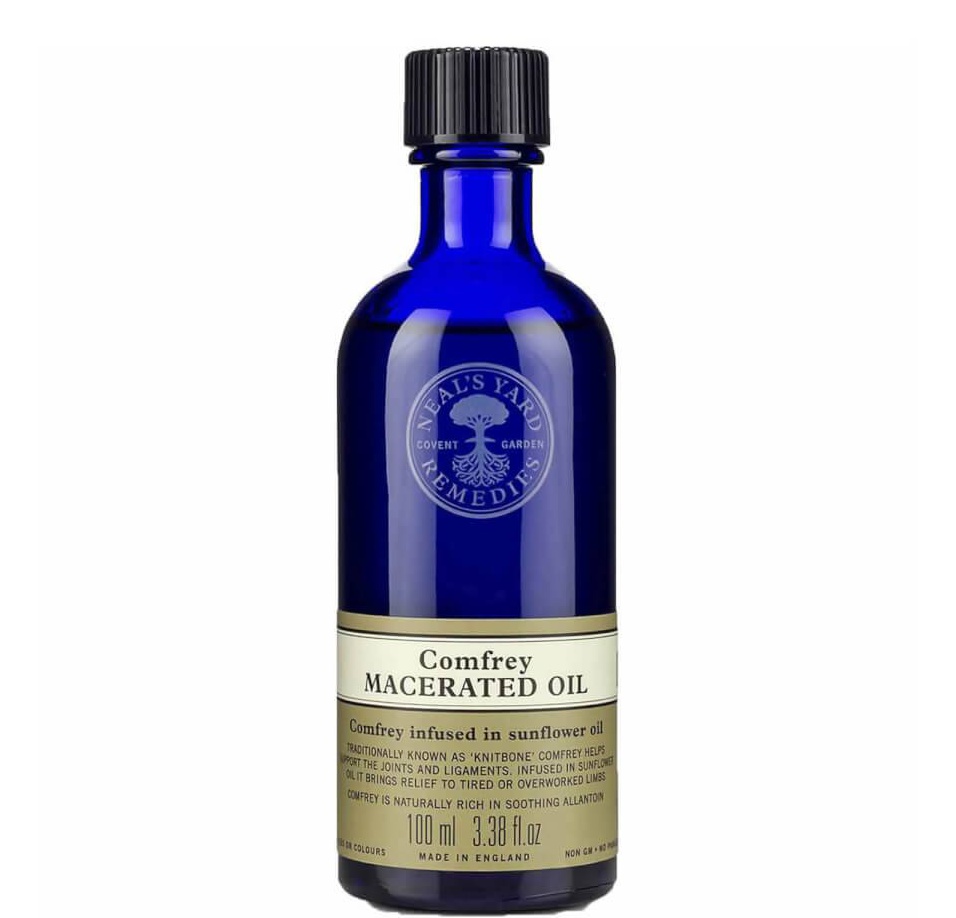
Comfrey Macerated Oil
Ingredients overview
Highlights
Other Ingredients
Skim through
| Ingredient name | what-it-does | irr., com. | ID-Rating |
|---|---|---|---|
| Helianthus Annuus (Sunflower) Seed Oil* | emollient | 0, 0 | goodie |
| Symphytum Officinale Root Extract* | soothing | ||
| Tocopherol | antioxidant | 0-3, 0-3 | goodie |
Neal's Yard Remedies Comfrey Macerated OilIngredients explained
Sunflower does not need a big intro as you probably use it in the kitchen as cooking oil, or you munch on the seeds as a healthy snack or you adore its big, beautiful yellow flower during the summer - or you do all of these and probably even more. And by even more we mean putting it all over your face as sunflower oil is one of the most commonly used plant oils in skincare.
It’s a real oldie: expressed directly from the seeds, the oil is used not for hundreds but thousands of years. According to The National Sunflower Association, there is evidence that both the plant and its oil were used by American Indians in the area of Arizona and New Mexico about 3000 BC. Do the math: it's more than 5000 years – definitely an oldie.
Our intro did get pretty big after all (sorry for that), so let's get to the point finally: sunflower oil - similar to other plant oils - is a great emollient that makes the skin smooth and nice and helps to keep it hydrated. It also protects the surface of the skin and enhances the damaged or irritated skin barrier. Leslie Bauman notes in Cosmetic Dermatology that one application of sunflower oil significantly speeds up the recovery of the skin barrier within an hour and sustains the results 5 hours after using it.
It's also loaded with fatty acids (mostly linoleic (50-74%) and oleic (14-35%)). The unrefined version (be sure to use that on your skin!) is especially high in linoleic acid that is great even for acne-prone skin. Its comedogen index is 0, meaning that it's pretty much an all skin-type oil.
Truth be told, there are many great plant oils and sunflower oil is definitely one of them.
A medicinal plant with analgesic (painkilling) and anti-inflammatory magic properties. It contains allantoin and rosmarinic acid that are probably responsible for its soothing power. It's often used in the field of sports for treating bruises or sprains.
The questionable side of comfrey (that prevented us from giving it a goodie rating) is that it also contains pyrrolizidine alkaloids (PA). That guy has some proven toxic effect so for example in Germany the permissibale dose of PA is 100 μg/day and if the dose is between 10-100 μg/day the treatment is limited to 4-6 weeks per year.
But do not panic: most probably your skincare product does not contain anywhere near that dose. For example, a German sport-ointment to treat ankle sprains contains only 0.35 μg/g PA, so even with four uses per day, the dose is way below 10 μg/g. The same is probably true for your skincare product.
- Primary fat-soluble antioxidant in our skin
- Significant photoprotection against UVB rays
- Vit C + Vit E work in synergy and provide great photoprotection
- Has emollient properties
- Easy to formulate, stable and relatively inexpensive
You may also want to take a look at...
| what‑it‑does | emollient |
| irritancy, com. | 0, 0 |
| what‑it‑does | soothing |
| what‑it‑does | antioxidant |
| irritancy, com. | 0-3, 0-3 |





